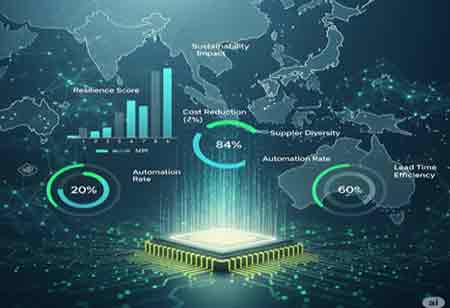THANK YOU FOR SUBSCRIBING
Emerging Trends In Processing Big Data In The Future
Big data innovations are bringing about new changes in the way organisations store, process, and analyse data.

By
Apac CIOOutlook | Tuesday, August 16, 2022
Stay ahead of the industry with exclusive feature stories on the top companies, expert insights and the latest news delivered straight to your inbox. Subscribe today.
Industries are using new technological advancements to enhance processing data analytics that is produced in vast amounts.
FREMONT, CA: Big data innovations are bringing about new changes in the way organisations store, process, and analyse data. It focuses on optimization of the products by improving efficiency in operations and increasing visibility in rapidly changing environments. As a result, new techniques are emerging in several industries for collecting, processing, managing, and analysing data. Although techniques are evolving for streamlining data storage processes, various challenges are rising due to the rapid changes in the information and variations in the data quality. For better progress in overcoming these challenges, certain new trends are helping organisations.
One of the trends is the rise of edge computing, which is helping in processing increasingly diverse data. There are large volumes of dark and unstructured data that are left unprocessed by hosting organisations. They emerge from sources such as cloud systems, smart devices such as smartphones and voice assistants, and video streaming platforms. Voice assistants and IoT devices are rapidly growing across various industries, such as retail, healthcare, finance, insurance, manufacturing, and other public sectors as well. Hence, there is a greater need for big data management for data generated by these devices. This increase in volume is motivating organisations to establish multiple new data warehouses to process such massive loads of information. Businesses are utilising advanced devices that can collect and store data within themselves without any computing infrastructure. One such example is mobile banking apps that can be used remotely. Hence, companies are adopting next-generation technology where data can be handled where it’s generated.
Edge computing is primarily used for distributing processes, which can shift the processing load to the device before the data is sent to the servers. Edge computing reduces data flow through networks and processing costs, which helps in optimising performance and storage. It also helps in accelerating data analysis and provides a faster response to users. For example, the rapid growth of wearable devices is helping the healthcare sector gather patients’ data in real-time.
As the volume, velocity, and veracity of data increase daily, there is a need for big data storage innovations in cloud-based and hybrid-cloud platforms. Cloud computing paved the way for managing extensive amounts of new data without having to have storage infrastructure. Industries such as healthcare, financial services, and government sectors have restrictions on using public cloud infrastructure. There are inventories of regulatory-friendly infrastructures in recent decades that help organisations meet their critical requirements. Public cloud and hybrid-cloud infrastructures are gaining popularity and making progress with their economic and technical advantages.
With the increasing volumes of data, conventional analytics systems are inadequate for data analysis at scale. Therefore, machine learning and AI technologies are integrated into the new analytics approaches to easily spot patterns, identify anomalies, and make predictions at a faster rate. Several industries are using big data analytics technologies to optimise their business processes and overall operations. Using ML and AI technologies will enhance data analysis methods and enable greater visibility into customer





